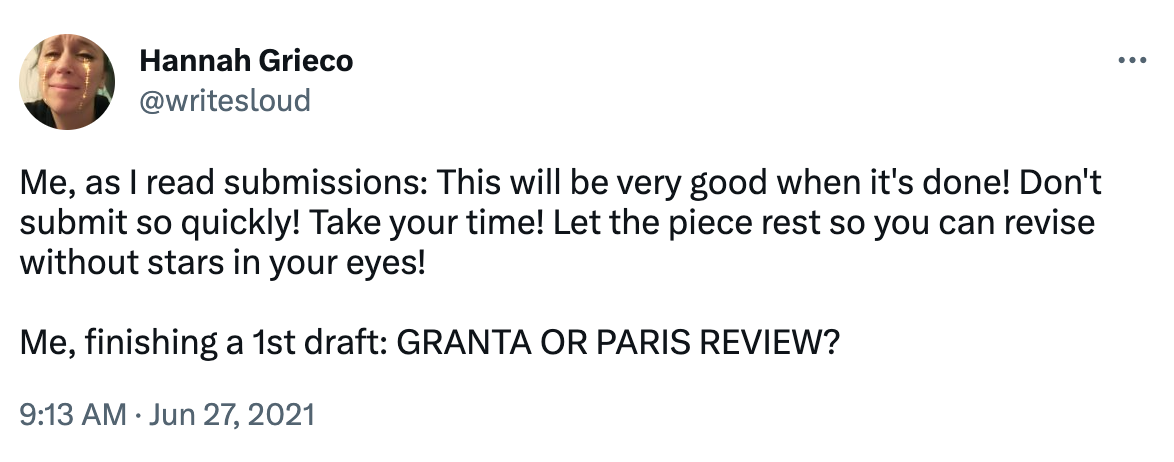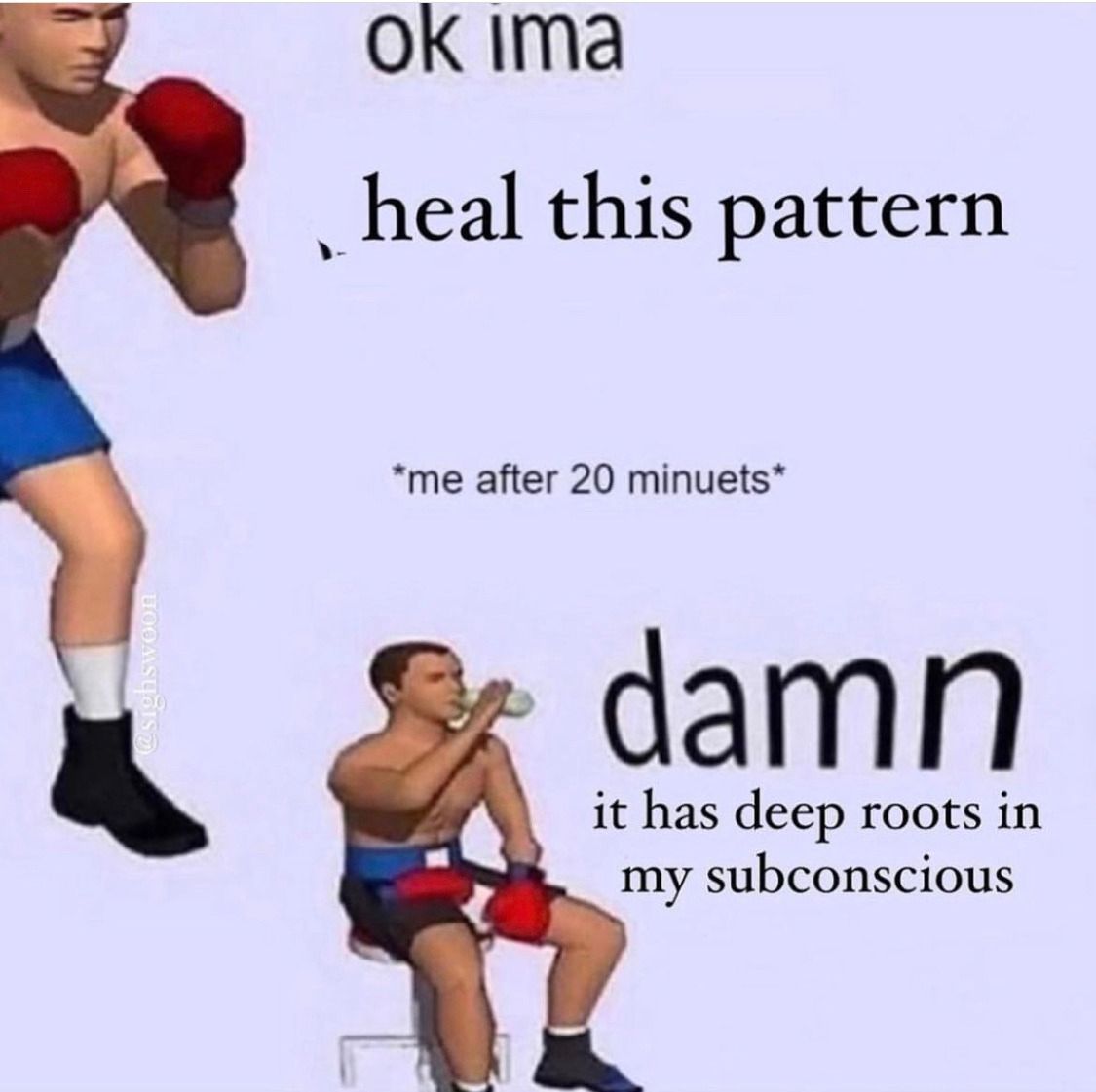Issue 65: Providing writing feedback
I’m so excited to announce that I’m teaching my first writing class with Accent Society on March 11! We’ll be looking at the ways in which contemporary technology can be incorporated into fiction, how to depict technology that’s constantly changing, and how to explore its intersections with our own interests.
I just finished a fantastic week at the Tin House Winter Workshop. It was also the first time I’ve written formal response letters for each manuscript, which has gotten me thinking about feedback overall. Feedback is a gift, but it can be daunting to both receive and impart. This will be part one of a series focused on feedback. This edition will focus on defining feedback and how to offer it, and part two will focus on how to prepare yourself to receive and process feedback. Part two will follow in the coming weeks!
What is good feedback?
On the first day of Tin House, the organizers set some great expectations. The goal of feedback is not to try and make the story into what you want it to be, but to understand the author’s intentions and help them achieve those goals. I appreciate this idea that good feedback should be in service of the author’s vision rather than being overly prescriptive. They also encouraged us to “be curious and kind” and to “take extra care with sensitive material and work exploring experiences outside your own.”
In my engineering life, I’ve followed Lara Hogan’s feedback equation: “Observation + Impact + Question = Actionable, specific feedback that has a chance of landing.” This can apply equally to writing.

Close reading is key because you’re rooting your comments in the work itself. An example of a writing feedback equation might be, “A scene abruptly transitions (observation) + Pacing feels rushed or emotions can’t land (impact) + Can we see more of the character’s reaction before the scene concludes? (question)”
Good feedback is curious, respectful, specific, and actionable.
What types of feedback are there?
There are different types of feedback you might provide or want to seek out, and it depends on the venue, the people you’re asking, and where you’re at in the writing process. Feedback can be more high-level—focusing on craft elements like plot, structure, characterization, themes, setting, pacing, etc. As a piece goes through revision and becomes more assured in its ideas and impact, larger structural changes may not be as helpful. Line edits involve more granular feedback at the sentence level—word choice, phrasing, context, and clarity. Google Docs and Microsoft Word are generally best for line edits since you can add comments and suggestions.
Although there are many levels in between, like reading for clarity of ideas or cutting down word count, you can bucket feedback into divergent and convergent.
How can you provide feedback?
In a more formal workshop setting, like Tin House, you might be asked to write one page response letters as well as provide margin notes or line edits. For Tin House, we could structure the letter however we wanted, but the organizers provided us with guidance: start with our initial reactions to the manuscript and what helped us sense the story, offer questions to help the author further develop scenes, characters, etc., and conclude with something that excites us about the project going forward. The questions were meant to prompt reflection, not mandate edits.
In a previous workshop, my instructor introduced the idea of prefacing feedback with a summary of the story. This is to ensure folks are clear about what happens or how the story is told, as well as show the author what things stood out in people’s minds. It’s a useful grounding technique to establish clarity and shared understanding.
Margin notes were meant to show the author our experience of reading the piece: where we were surprised or confused, which scenes landed well or felt rushed, and where we were struck by the language. I equate margin notes with liveblogging, because it’s an opportunity to share reactions and emotions in the moment. While reading a piece multiple times helps hone the feedback you give, the initial read always reveals valuable information too.
Margin notes are also an opportunity to call out positive things at the line level. I believe in “revising towards praise,” not just towards improvement. (My notes are not always eloquent, sometimes I just add “omg wowow” or “yesss.”) It’s really nice to pepper these in so that when the author goes back to read your feedback, they get these little affirmations along the way.
My Tin House instructor, Alejandro Varela, encouraged us to offer “radical restructurings.” In addition to tweaking the story, what if we flipped it on its head? What if this character didn’t die? What if the mystery that’s resolved at the end is actually solved at the beginning? How might different choices help clarify the most important themes in the story? It helped us experiment in the moment, as well as open up new ways of looking at our work that we might not have previously considered. Each question became a potential avenue of exploration.
One person in my workshop suggested we use the Liz Lerman methodology of critical response: The usual form is “I have an opinion about ______, would you like to hear it?” The artist has the option to say no. I like how this contrasts with the popular notion of workshops where the person being discussed must remain silent. We asked folks if they would like to hear the divergent feedback or radical restructurings before offering it.
Feedback is a balance of boundaries and generosity. Seeking it out is a supreme act of vulnerability, and we should treat the task with care and consideration.
What kinds of feedback have you found useful in your own writing? How has the format or delivery influenced your reception of that feedback? Feel free to hit reply and I’ll share responses in a future newsletter!


Creative resources
- Debbie Millman on the personal brand paradox: “Rather than manufacturing a personal brand, why not build a reputation? Why not develop our character? Imagine what we could learn from each other if we felt worthy as we are instead of who we project ourselves to be.”
- I’m heartbroken about Catapult shutting down their magazine and classes—it was such a great literary publication and community, and the literary world won’t be the same without it. Here’s a helpful thread from Lilly Dancyger on taking writing classes independent.
- An essay on the ways in which contemporary fiction writers have begun to incorporate dating apps into their work—”the results are often new, bold stories about human connection and desire.”
- “Inside Book Twitter's Final(?) Days” by Sophie Vershbow
- Some excellent pieces from Catapult’s Romance Week: the art of romantic tension, writing YA romance, and writing a romance novel after being an avid romance reader for so long.
Recent reads & other media
I really enjoyed Weightless by Evette Dionne, an essay collection that examines fatness and our society’s fatphobia through systemic and personal lenses. Dionne weaves together her personal experiences with broader conversations around size, pop culture, race, politics, health, and gender.
I’m almost done with The Town of Babylon by Alejandro Varela, a fantastic novel about a public health health professor who returns to his suburban hometown and confronts people from his past. It explores queerness, the concept of home, and the correlation between health and community. There are many great things about craft and politics in Varela’s interview with Apogee Journal, particularly how he is “forever trying to find that middle ground between the advocacy and the enjoyment, the entertainment.”
My sister and I watched Magic Mike’s Last Dance, with our OG crush Channing Tatum. If I had to rank the Magic Mikes, it’d be 2, 1, 3—you just can’t beat Mike’s epic Pony dance or Richie making a gas station cashier smile by gyrating to the Backstreet Boys. E and I have unwittingly been on an apocalyptic bent: we saw Knock at the Cabin and we started The Last of Us. I haven’t played the video game, but found this essay about video game adaptations really interesting, “One may care about a character on television, but one must care for a character in a video game.”
Note: Book links are connected to my Bookshop affiliate page. If you purchase a book from there, you'll be supporting my work and local independent bookstores!
~ meme myself and i ~
An analysis of the titles of the Fast & Furious franchise. I require a yummy beverage at all times. It’s not hoarding if it has potential. The original Banshees of Inisherin. This really makes you think. I can’t stop doing this dance (the dancing dogs are from a Barbie movie)!!

